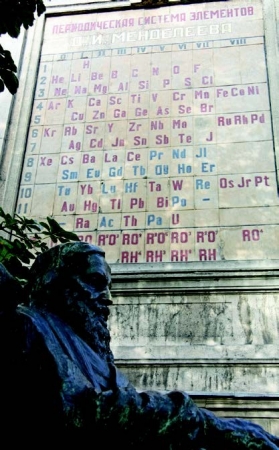What Would Mendeleev Say?

By Merry Morris
Dmitri Mendeleev was an excellent teacher and searched for ways to make chemistry easier for his students. He began arranging the chemical elements in groups with similar characteristics which developed into today’s periodic chart of the elements.
Mendeleev’s original chart included 63 elements; today we know 118. Though puzzled by the gaps in his first table, Mendeleev was confident the table was right and the missing elements to fit in the gaps would show up … sometime. These mysterious elements WERE discovered, and in Mendeleev’s lifetime. Since then, more distinct elements were found that fit right into place in the periodic table.
Mendeleev could not have imagined what the periodic table looks like today. Scientists are now able to create “synthetic elements” that never existed in nature. Mendeleev would want to know “how do you make these crazy elements” and “how many different unnatural elements can you make?”
Those are the same questions that scientists are still considering today.
How to Make an Unnatural Element?
The typical element is comprised of a nucleus of protons and neutrons, surrounded by orbiting electrons. The protons determine the atomic number and have a positive charge. Neutrons have a mass similar to the proton, but no charge. What if scientists could slip more protons or neutrons into a regular atom, creating a brand new element?
More protons and neutrons get into a nucleus by brute force. To create this force requires a particle accelerator or collider, a machine that boosts charged particles to very high speed and channels them into beams using electromagnetic fields and magnets. Then scientists smash together the nuclei, occasionally creating a new nucleus with additional protons or neutrons. The first success was technetium: its unique properties have made it important for medical imaging.
How Far Can They Go?
Scientists have discovered 92 natural elements and 26 synthetic ones with very interesting properties. Many of these synthetic elements, e.g., element 117, are unstable and exist for less than the blink of an eye. Though short-lived, these creations reveal important details on the way atoms work.
Whether all synthesized elements will be so unstable they cease to exist remains to be seen. There may be a sweet spot of stability — a specific combination of neutrons and protons where nuclear forces keep them together. Finding that spot depends on bigger and better accelerators.
Extension Questions
- Where are the largest particle accelerators and colliders located? What are they capable of doing?